What Is An EV?
EV stands for Electric Vehicle which operates solely or partially on electric power in replacement of combustion-engines that derive power from burning gases and fuels. Electric vehicles are an environment friendly solution to tackle pollution, global warming and the swelling scarcity of fossils and fuels in the world. Though the idea of EV has been prevalent for a while, no considerable invention has been observed in this sector.
EV Opportunities & Market Stats In India
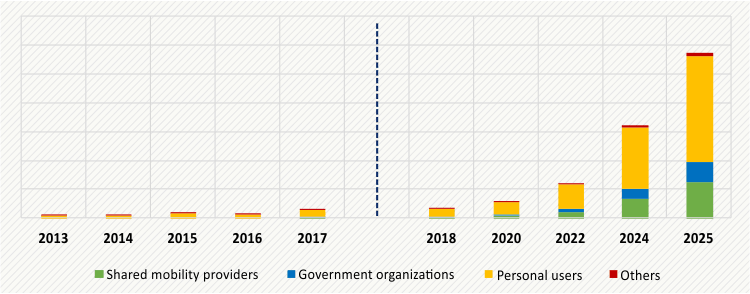
In 2010, the Ministry of New and Renewable Resources of India allocated a budget of 95 crores to incentivise on Electric Vehicles but the results of this scheme were not very fruitful. Since then, India has attempted to launch EV related schemes over and over again. First, in 2013, ‘National Electric Mobility Mission Plan (NEMMP) 2020‘ was launched to deal with environmental degradation and depleting energy resources. The scheme was supposed to provide subsidies and benefits to EV manufacturers, most of it never happened. Subsequently in 2015-16, finance minister Arun Jaitly introduced the FAME campaign and in 2017, transport minister Nitin Gadkari announced that India will run on 100% EVs by 2030, which remains questionable.
EV Global Markets Stats & Growth
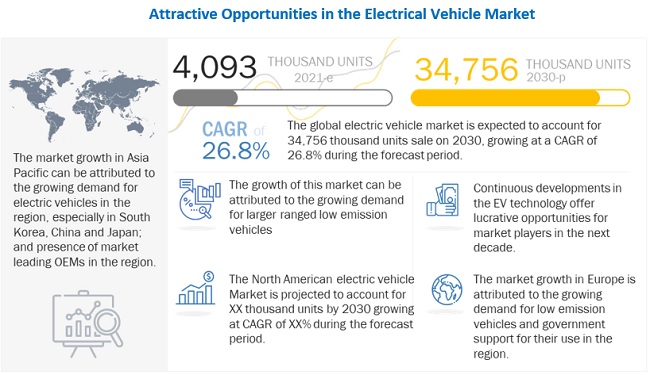
In 2019, the growth of the EV market was only 9%, a staggering decrease from 46% to 69% of the previous 6 years. The stagnant market was due to the decrease in sales in the largest EV markets of the USA and China. Despite this, in 2019, the EV sales increased greatly in Europe with 44% growth. Europe secured a massive 60 million Euros in EV and battery production and sales in 2018. Due to Covid-19, the production and sales rate of EVs has gone up by 80% in China while remaining fairly stable in Europe and USA. It is important to note that as of 2019, only 2.5% of the world’s passenger cars are EVs.
Global PlugIn Vehicle Sales & YoY Growth
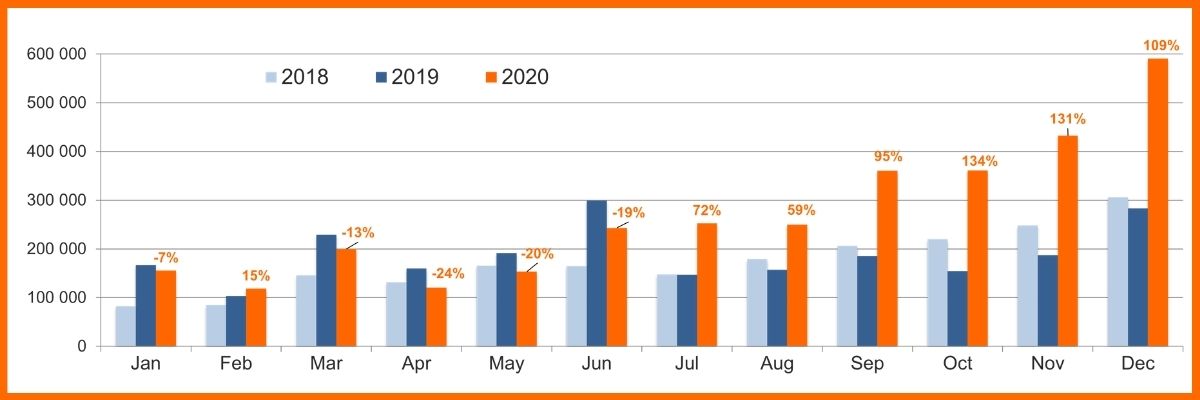
Key Benefactors In The Global EV Market
1. China
The EV market in China has seen an overall decrease in growth due to the reduction of subsidies of EVs. Their Central government cut off the subsidies for the electric vehicles that have a range of or lower than 200 kilometres and reduced subsidies by 67% for BEVs that have a range for above 400 kilometres. This is a way of the Chinese government to cut back on monetary support and extend non monetary support to the EV market. The EV market suffered significantly in the first financial quarter of 2020 due to the pandemic and the decreasing demand and saw a decline of 57% in the sales from the fourth quarter of 2019. Many EV manufacturers had to seize productions and to prevent their financial losses the government retained their financial incentives till 2022.
2. The USA
The EV markets in the USA saw a brilliant rise of 80% in 2018 with the launch of the Tesla Model 3. By the first quarter of 2019 there was a dip in the sales by 7% and a rise of OEMs by Chevrolet, Hyundai and Audi. The first quarter of 2020 saw a decrease of 33% in the EV sales which was facilitated more by the lowering of oil prices and significantly less ownership expenses of internal combustion engine vehicles. The future of the EV market in the USA is perched on great uncertainty as of now.
3. Europe
The EV market was completely taken over by Europe in 2019. While the USA and China saw a decline, Europe saw a rise of 44% in sales. The new emission law of the European Union permits 95 grams of carbon emission per kilometre for passenger cars and could have been one of the reasons for the growth of the EV market. The precipitators of the 70% increase of the BEV sales are the three new models by Tesla Model 3, Hyundai Kona, and Audi e-tron. Sales in Germany and Netherlands have been the major contributors to the growth of the EV market in Europe. This was as a result of greater demand for newer models, increased battery sizes in older models and altered incentives by the government.
Why Electric Vehicles?

- Electric Vehicles possess less running parts which also lowers the running costs. These electric vehicles run on electric batteries which are rechargeable and a one time investment unlike cars that run on diesel or petrol whose prices are always fluctuating.
- EVs offer clean energy and are environment friendly.
- Modern EV batteries are lithium ion batteries that have a very long run life while retaining energy. The energy discharge rate per month is just 5%.
- Charging the car batteries is inexpensive and can also be done for free in public car parks.
There are two types of Electric Vehicles
1. Fully Electric
They are also known as battery powered electric vehicles and have 99% less running parts than internal combustion engines and require very less maintenance. They generally require overnight charging for an averagely long journey and might need charging on the road as well. The range of an EV is one of the greatest concerns that are still being addressed by manufacturers.
2. Plug In Hybrids
These vehicles run on a hybrid of battery and fuels. There is an option to transition from the electric motor to the fuel powered engine which makes them better for travelling longer distances. It’s easier because you don’t have o find charging points on the journey. But PHEVs have the same harmful effects on the environment that internal combustion engines offer. They require more maintenance, have more emissions, and have more engine noise and a smaller range that BEVs.
EV Charging Technology
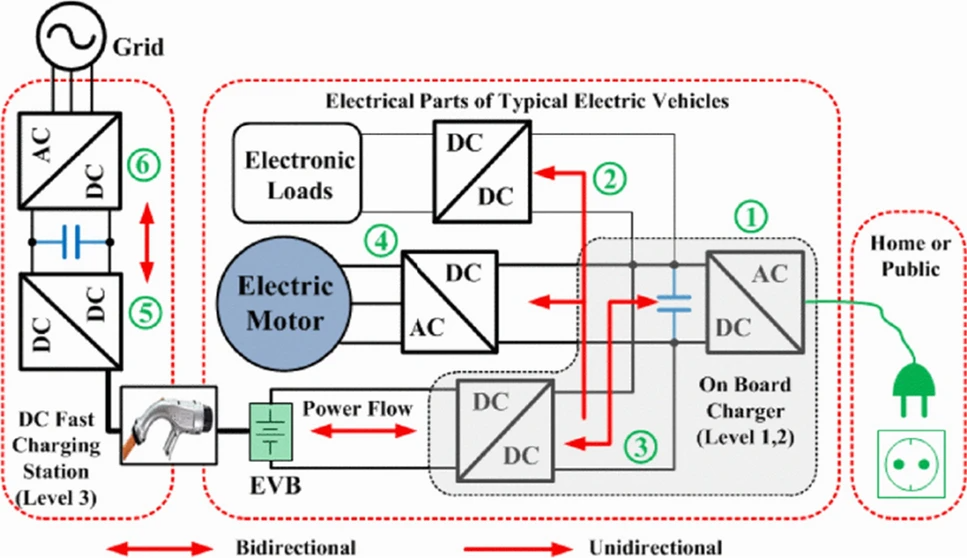
An EV charging station or charging point is essentially a machine that provides electric energy to plug in electric vehicles such as cars, buses, trucks, etc. Some electric vehicles have an inbuilt converter that can plug into any standard charging outlet while some EVs require custom charging points. The charging stations comply with multiple charging standards from direct current rapid charging with multiple adapters to AC fast charging. Charging stations are typically found in parking lots, government aided facilities, street corners, and shipping centres. Some of the charging standards are:
1. Voltage & Power
Alternating Current (AC) and Direct Current (DC) both with two levels each.
2. Connectors
The most common connectors are: J1772, Type 2 connector Type 3 connector, Combined charging system, CHAdeMO, and Tesla. There are four types of plugs adapted for the different connectors.
3. Charging Time
The charging time depends on the capacity of the battery, power density and the charging power. The higher the capacity of the battery the more charge the battery can hold. Charging time can be calculated by: Charging Time (h) = Battery capacity (kWh)/ charging power (kW).
4. Battery Capacity
Tesla is the first company to release long range vehicles with their Model S with battery capacities of 40 kWh, 60 kWh and 85 kWh lasting for about 480 kilometres. Plug-in hybrid vehicles have a capacity of 3 to 20 kWh, lasting up to 20 to 80 kilometres.
5. AC To DC Conversions
Batteries are generally charged with DC power. To charge from an AC power supply, the EVs have an inbuilt AC-to-DC converter. The cable supplies AC power from the charging point and the converter internally converts the power into DC and charges the battery. The inbuilt converters have a maximum charging speed of 6 to 7 kw which is sufficient for overnight charging. This is called AC charging. For a rapid recharging of EV batteries a much higher power is necessary which requires a larger AC-to-DC converter which is improbable for an EV vehicle. That is why there are charging stations which supply DC power directly. This is called DC charging.
Public Charging Stations

Public charging stations are essential for various reasons like, long drives and overnight journeys on the road and the lack of an EV charging station at home. Public charging stations do not require any new or fancy infrastructure and can function well within the already existing electrical grid. Charging stations are set up by state authorities, independent benefactors, and commercial enterprises. They are usually set up in government aided facilities, roadside stations, covered parking lots and shopping centres. According to the Global EV Outlook 2013, “As of December 2012, around 50,000 non-residential charging points were deployed in the U.S., Europe, Japan and China.” And according to the CHAdeMO Association, “As of August 2014, some 3,869 CHAdeMO quick chargers were deployed, with 1,978 in Japan, 1,181 in Europe and 686 in the United States, and 24 in other countries.”
1. Asia/ Pacific
Japan had around 1381 public DC fast-charging stations and 300 AC chargers as of 2012. China had around 800 slow charging stations, and no fast-charging stations as of 2012. As of 2013, Australia had around 30 stations situated in Melbourne and Perth.
2. Europe
In Europe, Estonia is the only country to have covered a nationwide network of EV stations, with 165 fast chargers in high density urban areas. As of 2012, around 15,000 charging stations had been installed all over Europe. As of 2013, Norway had over 4,029 fast-charging charging stations and 127 DC charging stations.
3. North America
As of 2018, America has 18,000 operating charging stations. It increased from 5,678 charging stations in 2013. Tesla had installed around 1971 stations by July 2020. As of 2019, there are 2,140 CHAdeMO charging stations, 1,888 SAE CCS1 charging stations, and 678 Tesla Supercharger stations.
4. South America
In 2017, an oil company in Argentina known as YRF announced that it will install 220 fast-load charging stations for EVs in their nation.
Business Opportunities In Electric Vehicles
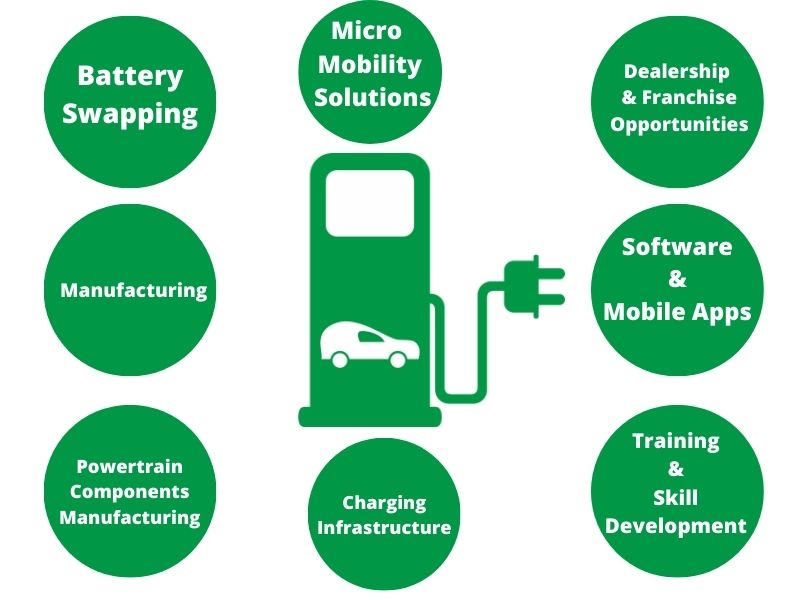
1. Battery Swapping
Considering the condition of the world environment and the rise of electric vehicles, within the next twenty years, most of our vehicles will run on electricity instead of fuels. The estimated battery life of a decent and well used lithium battery for a two-wheeler is around 1000 charge cycles. Which means the battery will last approximately for 2 to 5 years after which it needs to be replaced. Despite the exertion the battery will not be dead. These batteries can later be used to set up power banks that store energy for other later usage. These come in use for a variety of reasons like propping up the grid for energies such as wind and solar and to recover metals like copper, steel or aluminium. The battery swapping model has worked very successfully in China. NOI, an automaker brand based in Shanghai, has a compulsory battery as a service (BaaS) policy for all their cars. This basically means that the owner of the car will not own the battery but lease it until it is swapped. Since the battery is the most expensive part of an EV, leasing the battery reduces the cost of the vehicle significantly.
2. Manufacturing
Electric Vehicle Manufacturing
Many start-ups have emerged into the auto making business that has traditionally been reserved for established companies. While in China EV two-wheelers are growing, in the United States, Hybrid and Electric Vehicle manufacturing has expanded. Trying to meet the rising demands, companies like Ford, Honda, Tesla, and Toyota are introducing newer models that are environment friendly and have reduced carbon footprint.
Battery Manufacturing
India is lagging behind in terms of manufacturing lithium-ion batteries. Cells are imported from China or Taiwan and Indian battery manufacturing companies assemble the cells into battery packets and supply them to OEMs. There aren’t many companies in India that have been able to take on the battery manufacturing cycle from scratch except a few start-ups like Ziptrax and Raasi
Solar. Lithium based batteries are mainly available in the following types:
- Lithium-Cobalt Oxide Battery.
- Lithium-Titanate Battery
- Lithium-Iron Phosphate Battery
- Lithium-Nickel Manganese Cobalt Oxide Battery
- Lithium-Manganese Oxide Battery
- Lithium-ion Polymer Battery.
The battery-manufacturing business requires an effective team of researchers and developers and an efficient sales management team that will ensure the smooth manufacturing and retailing of the products. Manufacturing high power batteries is significantly more complex that low power batteries which remains the most important challenge. In 2017, the Niti Ayog demanded for more battery manufacturing plants in India.
Fabrication Electric Vehicle Charger
The government of India has been trying to promote the use of EVs and its benefits through the Faster Adoption and Manufacturing (FAME) of Electric Vehicles campaigns. This gives rise to the opportunity of manufacturing EV chargers. The EV chargers can be categorised as:
- Slow Charging Unit– This type of charger yields a power output of about 3kW which takes about 6 to 7 hours for an EV to charge.
- Fast Charging Unit– This type of charger yields a power output of about 7 to 25 kW which takes about 3 to 4 hours for an EV to charge.
- Rapid Charging Unit– This type of charger yields a power output of about 43 to 50kW which takes about 30 to 60 minutes for an EV to charge. This unit comes in both AC and DC type.
3. Powertrain Components Manufacturing
EVs have a much less complex powertrain in comparison to internal combustion engine vehicles. They run on very few parts which include the batteries, AC-to-CD converter, DC-to-DC converters, electric motor, transmissions and electronic control units. There are some Indian companies like Elecnovo and Virya Mobility that manufacture EV powertrain components; most of the parts are imported from North America and Europe.
4. Software & Mobile Apps
Developing an EV charging mobile app or software that provides smart and smooth operating systems to improve vehicle simulation performance is a good business opportunity in the EV ecosystem. This is associated with ACES (autonomous, connected, electric, shared) vehicles.
Building Smart Features In An EV
An EV manufacturer can either choose an in-house software provider or hire someone from the outside for developing smart software for their EVs. An example of this would be the operating system TIROS which was developed by Tork Motors, that provides advanced telematics, artificial intelligence and advanced machine learning features. To implement the feature of personalisation, OEMs may choose the SaaS based smart mobility platform which enables features like, collection and monitoring of vehicular data and give a more personal experience.
Enabling Smart Mobility Features
1. On Board Navigation
This is a much safer and more efficient alternative to navigating through a phone. This gives your precise locations on the dashboard and call and text alerts when connected to your phone.
2. Range and Charge Prediction
This feature helps you check how much charge is left on your battery and how much distance you can cover with it. You can input the destination address at the start of the journey and find out if your EV has enough charge to reach the destination. This feature also shows you the charging points that will fall on your way.
3. Anti-Theft Features
Geo-fencing and Geo-location facilitate this feature. Geo-fencing creates a virtual boundary for your vehicle which restricts your vehicle to travel beyond the confined area. Geo-location on the other hand locates the vehicle and provides directions to locate it. An ebike sharing mobile app with the feature of enabling lock/unlock can be very useful.
4. Pre-Emptive Remote Diagnostics
This feature collects and analyses vehicular data and informs you about the maintenance of the vehicle. It offers personalisation and convenience to the user and also runs diagnostics on all the parameters of heat, vibration and sound.
5. Over the Air Updates
Automatic software and firmware updates possible through cloud connectivity.
6. Other Features
Other features include, profile management, limiting maximum speed of the vehicle, access ride history data, call for roadside assistance and alerting emergency services when necessary.
5. Charging Infrastructure
The only challenge that EVs are dealing with is the issue of charging. Setting up charging stations is a good business. There are several PSUs and private companies in India are trying to set up a nationwide charging station network in residential areas and office and business locations. They are planning to set up charging stations in parking lots, malls and restaurants to attract more customers.
There is a novel concept of Charge and Chill. As we know, charging electric cars is time consuming, taking a minimum of 30 minutes. These charging stations have an attached lounge where the customers can relax while their vehicles are being charged. There are a variety of food and beverage options, reading materials, and even movies. This means that charging stations do not need to be located in fuel stations, but can be located in cafes, restaurants and malls.
6. Dealership and Franchise Opportunities
With new EV models springing up in the market, vehicle dealerships and franchises are good for business. The key focus of a dealership is to close new automotive sales, services, and accessories. How to start a dealership?
- Analyse The Market– Before entering a car dealership it is important to research the market, what products are in demand and what the customers want from a business. This step is important to make the business successful.
- Identify Clients– Each business has an ideal client. The qualities of your ideal client will be shared by your best customers. You should shape your company based on the needs of such clients.
- Calculate The Market Growth– The purpose of researching the market is to analyse whether your product has demand in the market. Finally you have to decide how much your market revenue will be based on your products and its demand.
Electric Car Dealership In India
- The Sales Manager
- The Assistant Sales Manager
- The Finance Manager
- The Manager
- Technicians and Workers
- Stakeholders
The Four Requirements For An Electric Car Dealership
- A showroom of 1500 to 2000 square ft with a service area of five bays and a yard to carry a month’s product.
- The greatest investment, that is, a month’s inventory. For this you take a bank loan and you will need a good team to keep the EVs clean.
- The cost of running the dealership- employment, electricity, generator for at least 6 months. Hire a good marketing team.
7. Training & Skill Development
The use of an EV can be very complicated for which a personnel with the respective skill set will be eventually needed. This is an opportunity to set up a skill development industry for training people to develop the relevant skills needed to start a career in the EV ecosystem.
8. Fleet Operations
Due to the low expense of running, maintaining and purchasing an EV, the fleet operations have typically high utilisation rates. Also developing a fleet management software is a good business opportunity.
Employee Vehicle
These vehicles are available to the employees of a certain company, often leased from work as a perk of the job. The employee can charge at home or at charging stations and office parking lots and have their company pay for it.
Workforce Fleets
These are the vehicles owned by the company and are used for service to the company. The employees can charge the EVs at home and get a refund for it or leave the vehicle at the office to charge overnight.
Delivery Vehicles
Depending on the type of the company, these vehicles have a very tight charging schedule as they work lots of hours for long distances of 200 to 400 km.These vehicles can be charged at home as well.
Municipal Vehicles
Municipal fleets have a variety of vehicles under their belt, like, police patrol cars, private cars for authorities and maintenance trucks which may be required to travel long distances. It is difficult to find fleet charging stations which makes charging EVs very critical.
Public Transportation
Public transportation includes buses and taxis that work all around the cities all day. They generally charge at night so they are ready for the morning runs. Electric taxis are much more inexpensive that traditional ICE taxis. They either charge at parking lots or at the owner’s residence.
Long Haul Vehicle
These are the servicing trucks that require both in-depot charging and on-the-journey charging.
9. Micro Mobility Solutions
Micro-mobility EVs are used for shorter journeys. They are two-wheels that are geo-fenced, so they are not misused. They are inexpensive and are used for first and last mile connectivity and daily commuting. They are available as rentals.
10. Trading Electric Car Spare Parts
Even though EVs have very few running parts, they eventually get worn out. Setting up a business selling spare EV parts is a lucrative business. Spare parts like, power electronics controller, DC converter, onboard charger, charge port, electric traction motor, traction battery park have a lot of value in the market.
Electric Vehicles are not just good for the environment but open up an array of business opportunities for us. Let us utilise it and invest more on them.
Emizentech is a leading automotive software development company equipped with talented team of software and app developers. If you have a project in mind then get in touch with us.

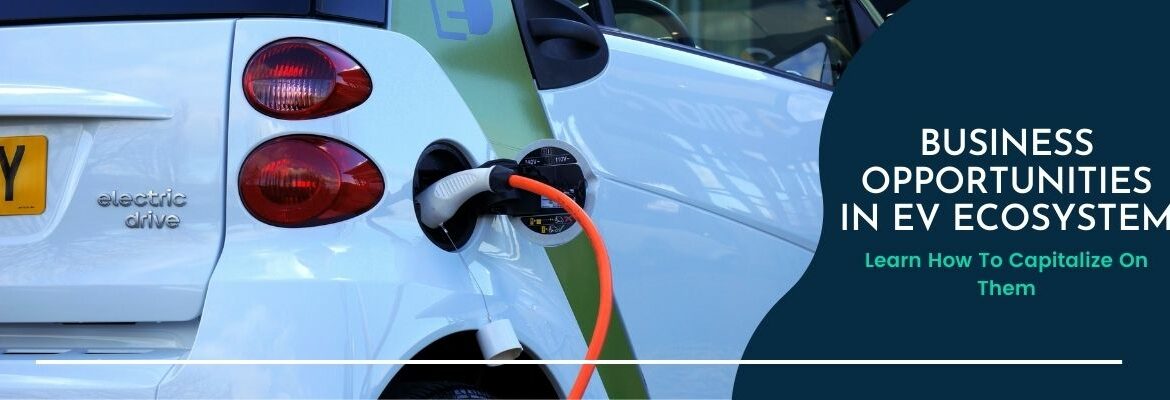
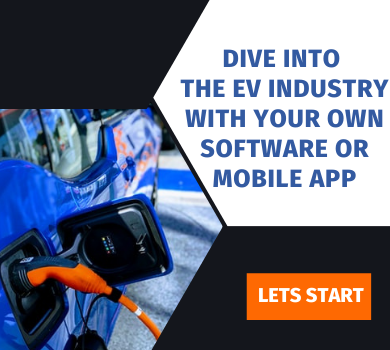



 USA
USA UK
UK